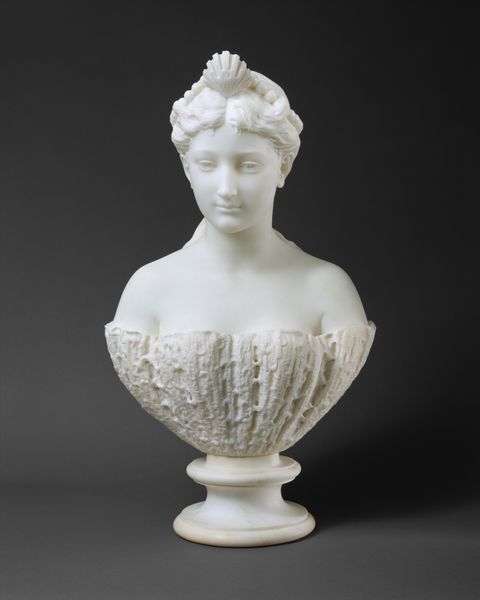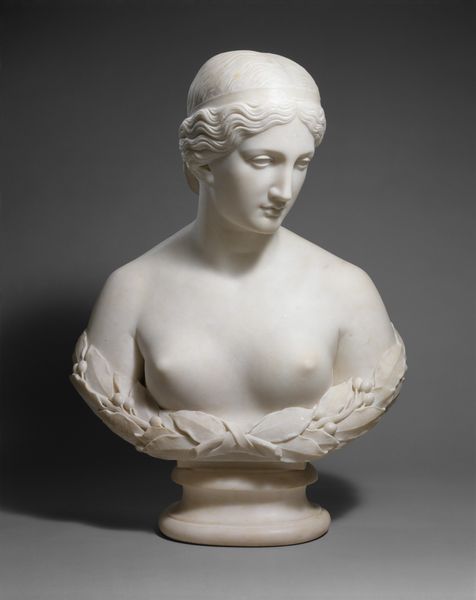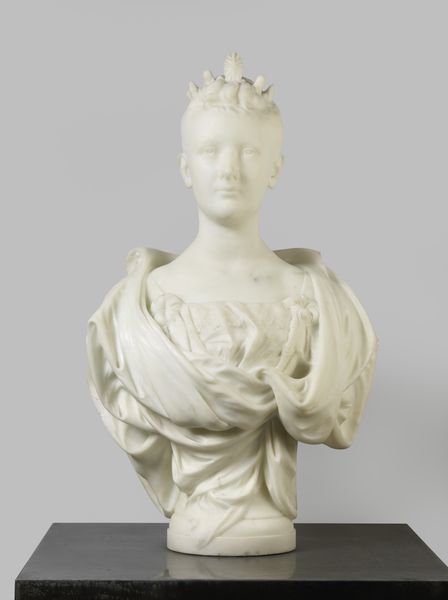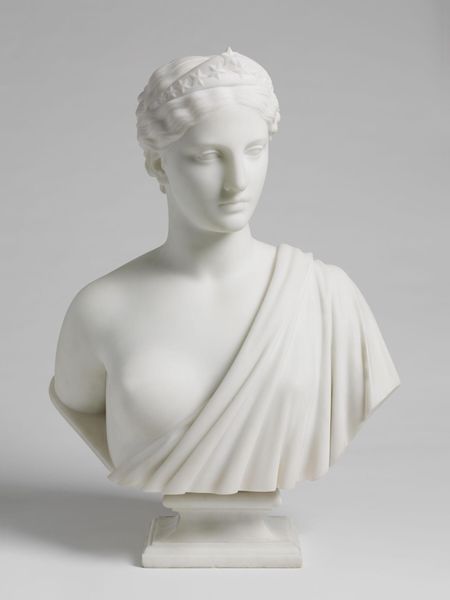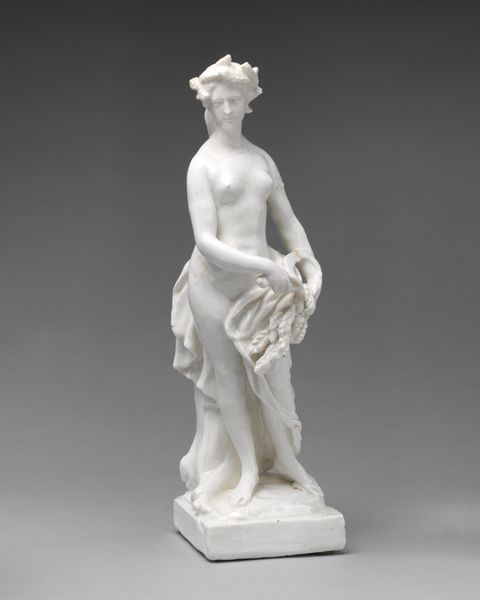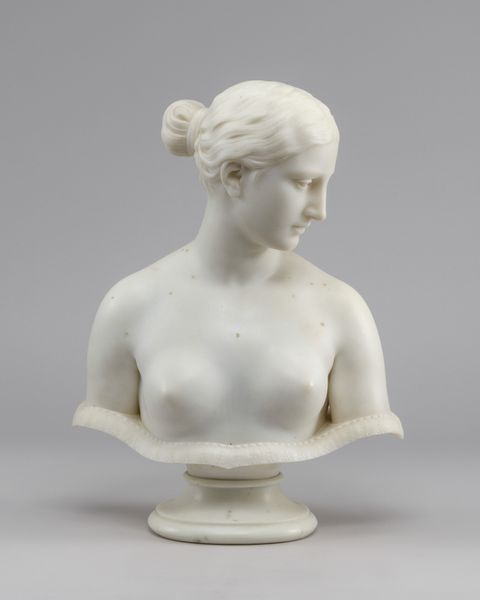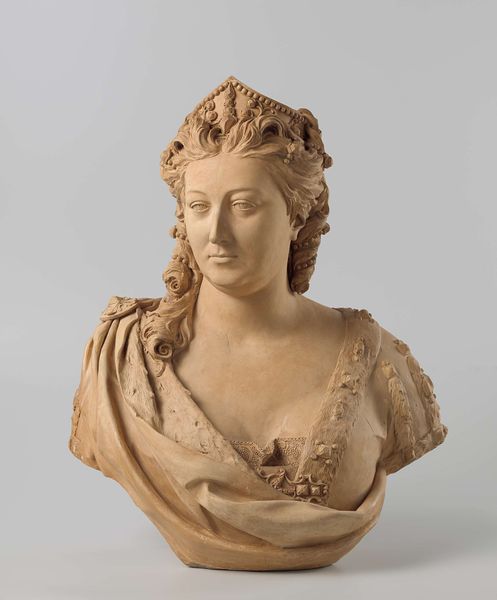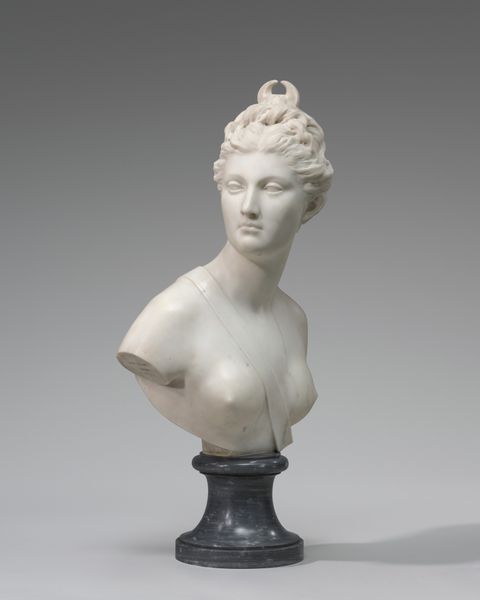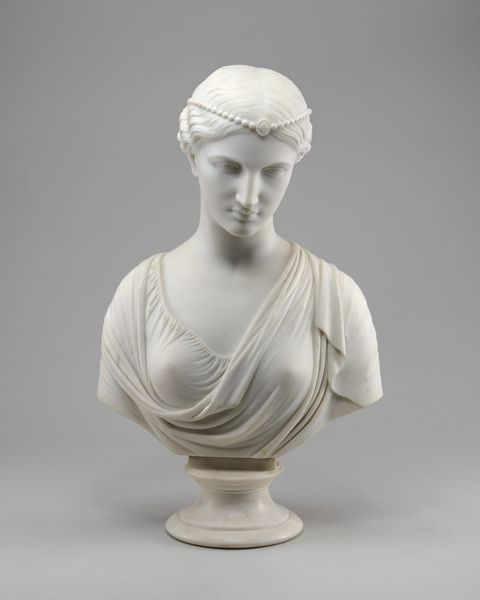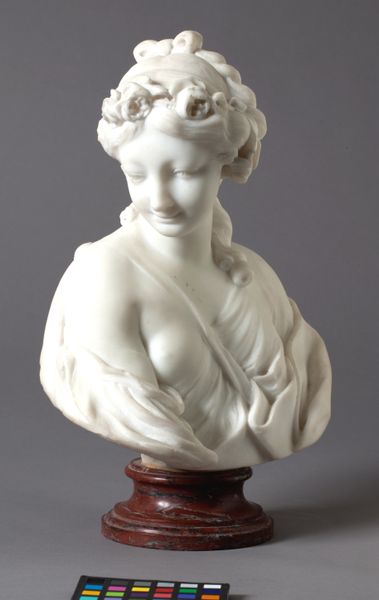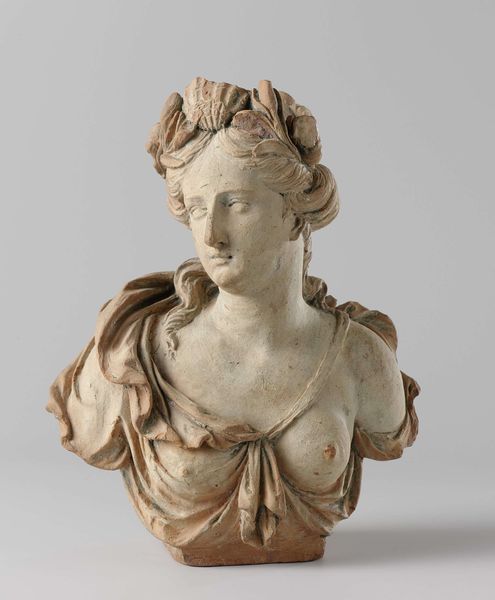
sculpture, marble
#
portrait
#
neoclacissism
#
classical-realism
#
figuration
#
sculpture
#
romanticism
#
history-painting
#
academic-art
#
marble
Dimensions: height 68 cm, width 47.5 cm, depth 31.5 cm, height 11 cm, diameter 24.5 cm
Copyright: Rijks Museum: Open Domain
Lorenzo Bartolini carved this marble bust of an unknown woman in the early 19th century. It embodies the Neoclassical style that dominated European art at the time. The smooth, idealized features and classical drapery evoke a sense of timeless beauty and harmony, echoing ancient Greek and Roman sculptures. This bust reflects the cultural values of the time, particularly the emphasis on reason, order, and classical ideals that followed the Enlightenment. The Neoclassical style was often associated with political and social stability. In post-revolutionary Europe, this aesthetic provided a sense of continuity with the past, as the elites sought to re-establish their authority and legitimacy through art. The art academy was central. Artists were trained to reproduce approved forms, and sculpture was promoted as one of the highest forms of artistic expression. Understanding this artwork means researching not just Bartolini's life and work, but also the broader social and institutional contexts in which it was made. By exploring these connections, we can gain a deeper appreciation for the complex meanings embedded within the art.
Comments
rijksmuseum about 2 years ago
⋮
Bartolini was an innovator in Italian sculpture. He broke with the then-current tradition of using the art of Classical antiquity as a model. This modest portrait was directly inspired by a famous Italian Renaissance sculpture of a woman (from around 1475), who holds her hands to her chest this way. Bartolini’s modern style made him a very popular portraitist for the European beau monde.
Join the conversation
Join millions of artists and users on Artera today and experience the ultimate creative platform.
